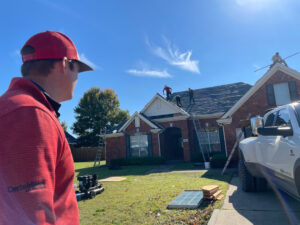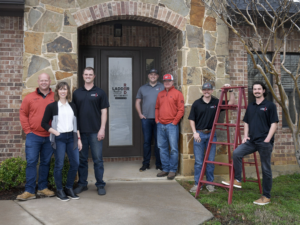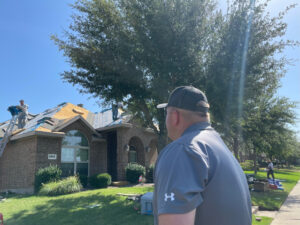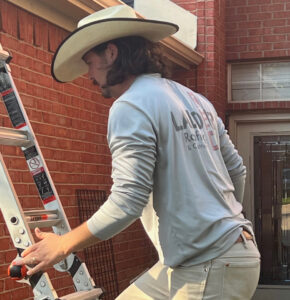Plot twist: it won’t happen. At least, not for the entire cost of your roof.
We’ll get into this later but here’s the short of it: insurance companies don’t want to pay for things.
They like money.
In an even more intense way than how you like money.
But here’s what you can do: you can get prepared for an insurance claim.
Which means you can ensure you’re paid what you are due and are holding the insurance company accountable for their end of the contract.
So, let’s get started.
Getting Prepared
If you’ve never experienced a roof loss, you don’t know how to get insurance to pay for roof replacement.
Red Ladder Roofing is here to make that process a little clearer.
According to Verisks 2021 report, Texas had over 1.5 million properties affected by hail in 2020 alone.
That number is almost a quarter of total U.S. properties affected that year.
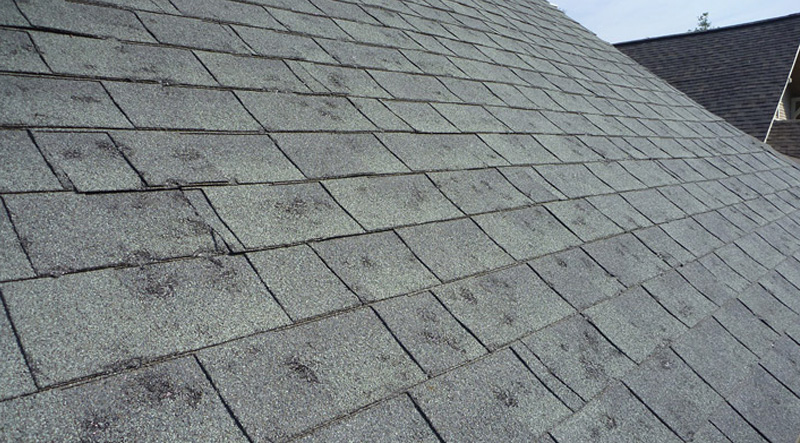
This means that, if you live in North Texas, you and your insurance policy had better become acquainted.
The worst thing you can be is unprepared, because insurance companies will take advantage of this.
Even if you’re covered for the loss, they will do everything in their power to find ways not to pay out.
Right after a catastrophic weather event, there are a ton of questions that swirl through your head, like:
- How do I file a roof insurance claim?
- How can I get a new roof if insurance doesn’t pay for it?
- Can I keep insurance money for my roof?
- Does my home insurance cover my roof?
- Plus many more…
Most of our clients have one of two experiences with their insurance adjuster: nice and easy going, or rude and difficult.
If you get the first experience, then perfect.
You can ask away with any of the questions from above and they’ll help you answer those questions.

If you get the second experience, and you’re unprepared, you’re going to get steam-rolled by the adjuster.
It’s not in their best interest pay out on your claim and unfortunately, when some people sense lack of knowledge from another person, they abuse it.
So, we’re going to avoid situation two by arming you with the answers to the questions above.
You will know exactly what you’re entitled to during your insurance negotiation process.
Let’s begin!
Does Home Insurance Cover My Roof?
It depends.
The only sure fire way to determine whether your home insurance covers your roof is by looking through your current policy.
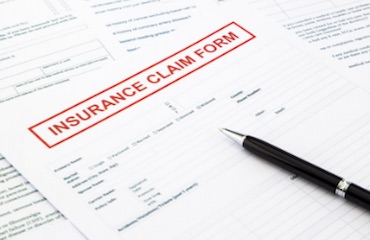
We’re not here to make you an insurance adjuster, but our simplest advice is: make sure you understand your policy conditions.
In English, this means: understand what conditions must be in place for your insurer to pay you.
Not sure if you’re covered? Call them up and get someone to walk you through. It’s not fun, but it will be worth it.
We’ve had several clients who have discovered unpleasant things about their current policy doing this.
This is a crucial first step as it’s a horrible feeling when you assume that your home insurance has your roof covered.
You pay a roofer, they come do the job, and then it turns out you missed a key condition that wasn’t met. No money for you.
The better scenario?
Your home insurance does cover your roof and you’re ready to roll!
Now before we go filing claims left and right, you need to:
Document the Damage
Here’s the thing: your insurance company doesn’t want to pay for your roof replacement.
So, telling them over the phone that you have damage isn’t going to cut it.
They might presume that you have damage from watching weather reports, but they’re going to come over and inspect your home.
You need to document the damage before the adjuster comes.
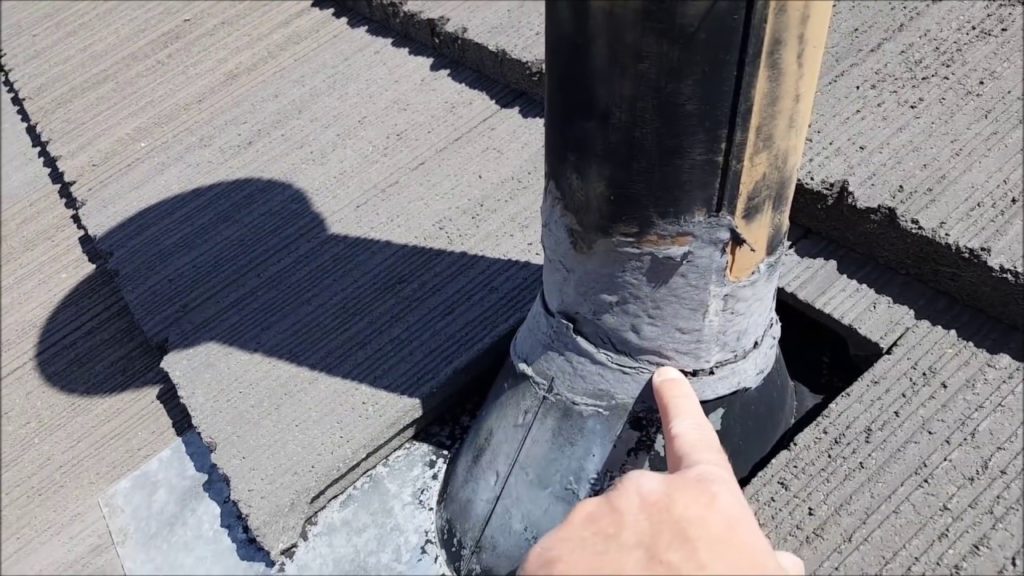
Why?
See paragraph 1: it’s not in their best interest to pay for your new roof.
There are adjusters out there who will leave items off of their damages checklist to lower the price of their company’s payout.
They can get away with this because they count on most homeowners not caring enough to check out their home.
Additionally, there is the minor chance that the adjuster damages something while they’re on your roof.
If they’re not feeling like Honest Abe, they may leave that off of their report.
You can avoid this scenario by having your own clear documentation of what’s damaged and what isn’t.
Now, a lot of people say, “Great! I’ll whip out my ladder and get to work!”.
And you can do that, but we recommend against it.
Get a Roofer to Check it Out
First, we’d prefer that you not slip off of your roof and injure yourself.
Getting on a roof isn’t exactly #1 in the safe activities list, so having Red Ladder Roofing come out and take a peek for you is the best game plan.
Second, most people only consider the shingles of their roof when scouting for damage.
You couldn’t be more wrong.
There are dozens of items besides your shingles that can can be marked as a loss and replaced by insurance.

These items range from dormers to vents to gutters to the shielding on your A/C unit.
So what? You’re going to get a couple hundred more bucks on your insurance claim? Big deal.
Wrong.
Finding even 3 or 4 more damaged items can net you an additional $1000 on your claim.
As professional roofers who have been in the game for some time, we know what we’re looking for.
So don’t run the risk of shelling money out that you don’t need to. Get Red Ladder Roofing to check it out.
Now, we need to take a quick detour.
There is a common factor in the insurance payout process that a lot of people miss: the age of your roof.
How Old is Your Roof?
We’re not going to train you to be an actuary.
However, you need to understand this: insurance companies look for ways to depreciate your roof.
This means that they will find certain aspects of your roof that allow them to legally pay you less on your claim.
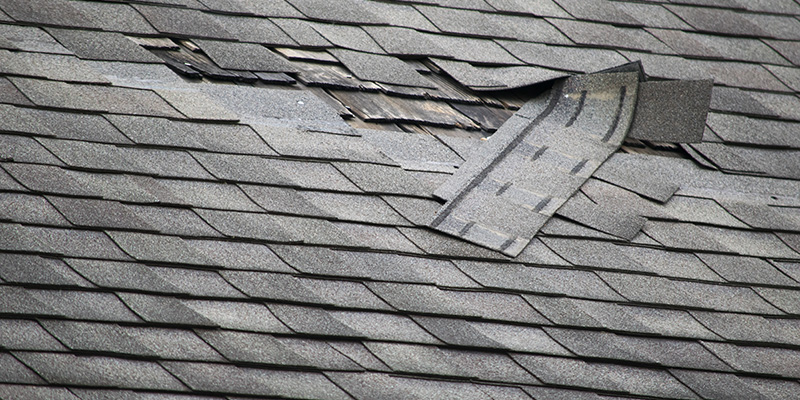
We’ve heard the same story over and over again. A roofer swoops in who will say anything it takes to get the job. They promise that the roof is worth $30,000 and swear that insurance will pay for all of it.
Then the adjuster comes out, determines that your roof is 10+ years old, and tells you that they’ll only pay for $20,000 of the full cost.
Congrats, the insurance company just received a 33% discount and now you’re out of pocket.
We’re not here to fear monger, just understand that this does happen. So if your roof is old (8+ years in North Texas), be prepared for this conversation.
Next up:
How Do I File My Roof Insurance Claim?
You’ve followed this post to every detail.
You understand your insurance policy, you documented your damage, and now you’re ready to file your claim.
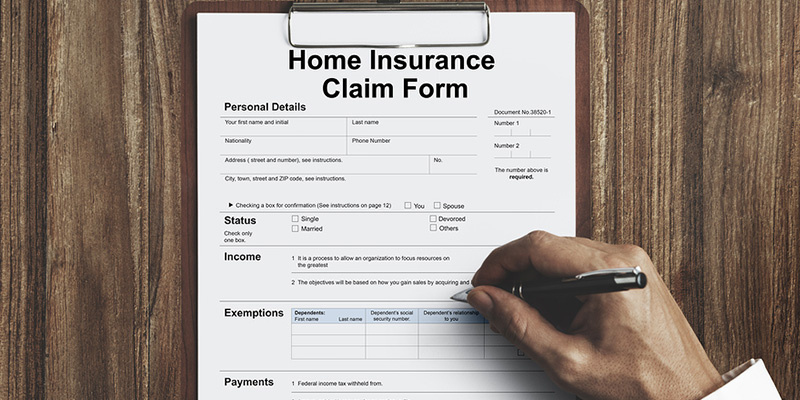
In the modern era of technology, most insurance companies allow you to do this from an app, email, or through text.
If you’re longing for human communication, you can give them a ring as well.
Fast forward a few weeks. You’ve filed your claim, the insurance adjuster has done their audit, and they have agreed to pay out on your roof.
During this part of the roof replacement process, we get asked some variation of this question:
Can I keep the insurance money for my roof?
Can I get my new roof for free?
Can you waive my deductible?
These questions are similar but different enough for some further insight.
Can I Keep the Insurance Money for My Roof?
Sometimes.
If you’re confident that there’s nothing in your insurance policy about returning used claim funds, you’re good.

Found some fine print in your policy that forces you to use all the claim money?
Make some upgrades with materials and aesthetic choices to make all your neighbors envious.
Here’s where you’re not good: you or the roofer you hired lie to your insurance company about how much the repairs would be.
This is insurance fraud.
Insurance fraud is bad.
We’ll address this entire side of roofing in a separate post, but please don’t do this. It’s a ticking time bomb that you’re willfully placing in your lap.
Can I Get a New Roof for Free?
We’ll keep this short and sweet.
If you properly document the damage to your home and understand what is and isn’t covered, you’re going to be fine.
We can’t promise that you’ll get the roof for free, but you’ll get the large majority covered.
If you’re deceiving an insurance company so that they payout more than you’re owed, then yes, you can get a free roof every time.
But, you are inviting the wrath of someone whose idea of a fun Saturday evening looks like this:

Their sole job is to audit claims and mathematically determine fraud.
Good luck with that.
Speaking of free roofs:
Can I Get My Insurance Deductible Waived?
This topic is hefty enough to deserve it’s own post, so we’ll keep this short again: No. No. And No.
Consider yourself more of a picture person?
No problem, we’ve got you covered:
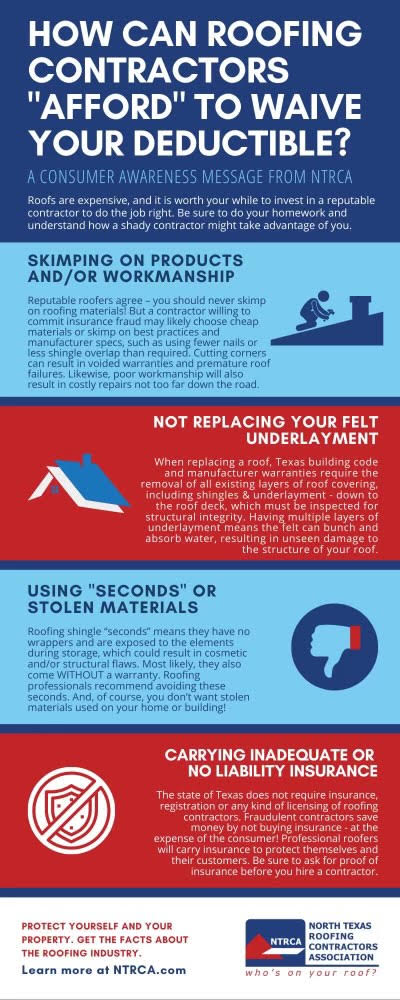
“But my uncle is a roofer and he said he can definitely cover my deductible!”.
The state of Texas would love for you to try that.
If a roofer is offering to waive your deductible, they are defrauding your insurance company, cutting corners with materials, or doing both.
And here’s the kicker, both of these outcomes might not manifest themselves until much later.
Heard of delayed gratification?
Meet delayed punishment.
Let’s say you manage to pull one over on the insurance company.
They will uncover you like the Mystery Gang did with every disguised villain.
Insurers run routine audits with the math powers of those nerds we mentioned earlier.
And they look for anomalies. And they always find those anomalies.
Unless you’re an actuary and consider defrauding the insurance company an intellectual challenge, please don’t do this.
Same situation for when your roofer uses shoddy materials.
You feel great: you’ve pulled one over on those stupid adjusters and saved a bunch of money.
Congrats, here is your reward:
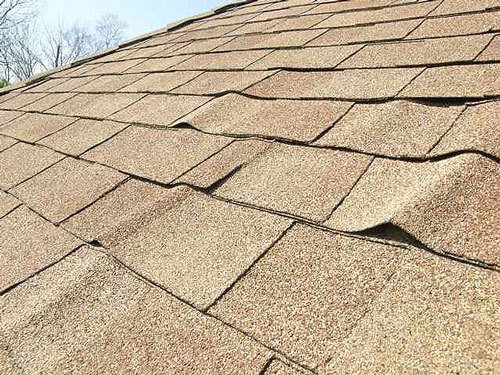
A storm comes and your roof falls apart.
Not a great prize, is it?
Using subpar materials is a ticking time bomb.
And when that time comes, the damage is likely to be more severe than if you had gone about this whole thing the right way.
Let’s Wrap It Up
I know this was pretty extensive, but it had to be.
This question is asked 4x more than any other, so it’s important to us to educate consumers on protecting themselves throughout this process.
And it’s equally important to understand how to make sure you’re not shorted by your adjusters.
We hope we’ve accomplished both of these things.
If you have any questions, please contact us.
Thanks!
